From experiencing terrifying avalanches to erupting volcanoes, here is my in-depth recounting of my challenging trek up to the summit of Volcan de Cotopaxi in Ecuador.
A few days ago, I did one of the most difficult things in my life and climbed up to 20,000 feet to summit Volcan Cotopaxi in Ecuador. It was challenging on so many levels and a first for me in so many different ways.
The only way to go up the volcano is with a guide and a guide will only take a maximum of two people. It’s often hard to do hikes as a solo traveler as there is often a minimum requirement of two people or you have to pay more. I chose to pay an extra 80 dollars for my own guide to ensure that the only thing stopping me from making it to the top was my own limitations and not the limitations of a stranger. They say only half of all people who start the trek are able to summit, so in this case it was worth it to pay quite a bit more for my own guide to ensure I was the one calling the shots to stop or not.
My guide Julian was incredibly experienced. He has summited Cotopaxi 748 times over the years, and that doesn’t include the people who weren’t able to make it and went back down before reaching the summit. In the dark, he knew every crevasse and overhang and was a hard-ass guide that wouldn’t let me stop, no matter how exhausted I was. His little mantra was “slowly, slowly, slowly” to ensure you didn’t rush up too fast and suffer from altitude sickness, as well as to make sure you didn’t burn out too soon.
The trek started off with Julian picking myself and another solo climber, Holger, up and grabbing some lunch and snacks and registering in the National Park. We drove up to the parking lot at 4500 meters to begin the first day hiking just over 300 meters elevation to the Refugio. The Refugio is where we spent the rest of the day acclimatizing as altitude sickness at these extreme elevations are a very real possibility.
Once in the Refugio you get to eat again and try to stay warm as there is no heat in the building. After a mid-afternoon snack, I laid down for two hours hoping to catch some sleep before supper at 6. They keep you warm with soup and more tea than I’ve ever drank in my entire life. Cup after cup after cup. It’s so important to keep hydrated when at such high elevations as you lose more moisture from your body than you do at sea level.
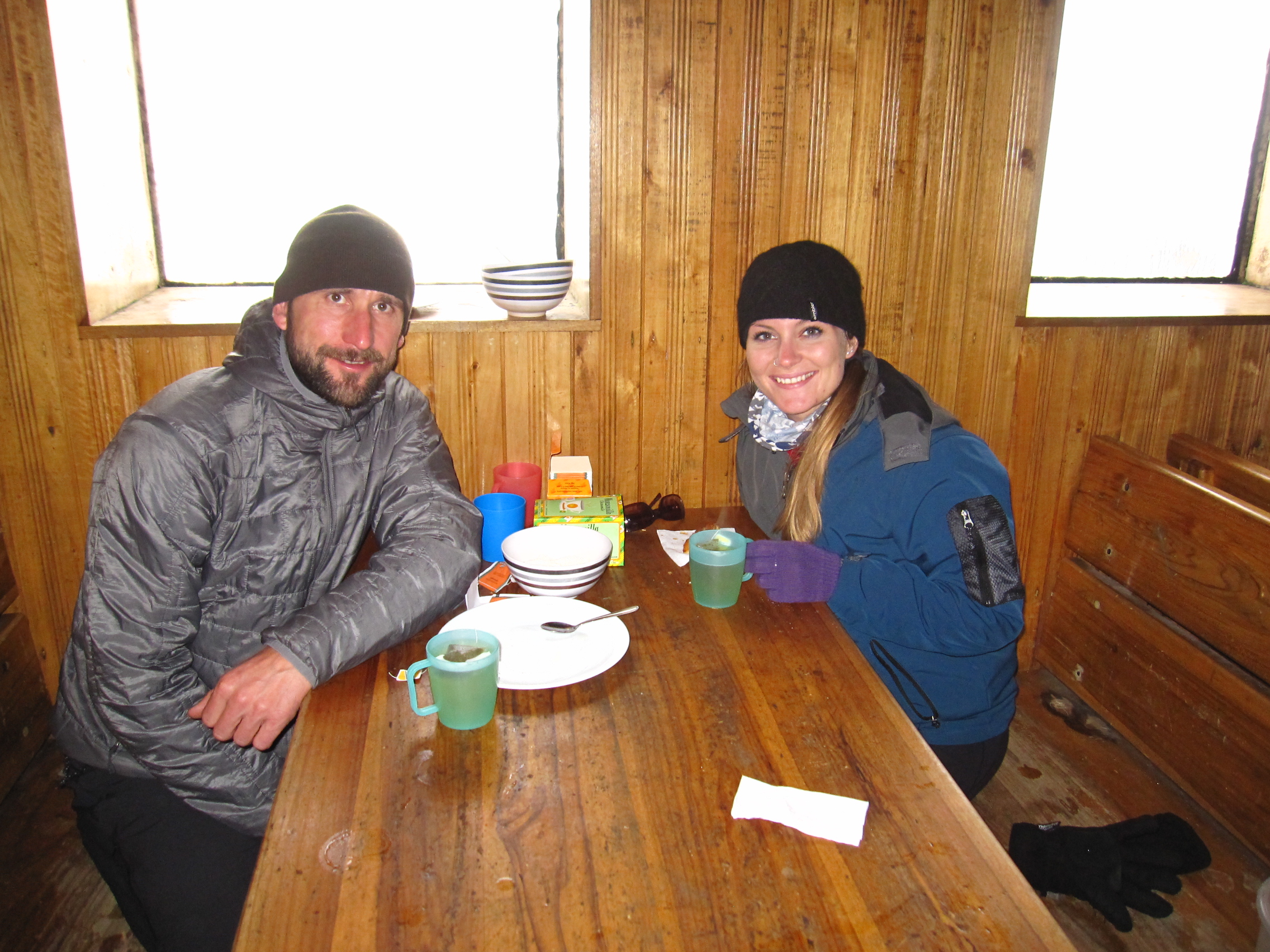
Holger and I eating a mid-afternoon snack while drinking ridiculous amounts of tea trying to stay warm.
Hiking Cotopaxi was a really big deal for me. It’s was a major personal goal and I couldn’t help but feel the stress and pressure of wanting to summit it. I had a headache and felt nauseous and it was a challenge for me to eat. I was concerned these were the beginning signs of altitude sickness so I forced myself to drink as much as I could, took some Advil and Tylenol, and tried to eat and sleep. Food would be so important for such a strenuous hike.
Around 730pm I retired to my bunk-bed and heavy duty sleeping bag to try stay warm and hopefully catch a few hours of sleep before waking at 11pm. When we awoke, we ate a light breakfast, as many cups of tea as your tummy could hold, and began putting on all our gear. I never did check the temperature on the mountain, but it was below freezing as my water bottle froze on the way to the summit. I wore four pairs of pants, two shirts, a fleece jacket, a fleece vest, carried an extra sweater and had a rainproof shell overtop.(Because as if walking through snow and ice wasn’t enough of a challenge without all the extra clothing weight and bulk!) After that you put on your gators, your harness, three pairs of mitts, your toque and helmet, and you also carry an ice axe. The entire time you hike you are linked with your guide by a two-meter rope so he can feel when you stop or if you fall.
We left the Refugio at 12:30am and began the long, slow, 6 hour, 1200m (elevation, not distance) ascent to the top. I was also lucky enough to have the most incredible weather. Often at that elevation, there are clouds surrounding the summit and you walk through a fog without getting to enjoy the incredible view. But not a cloud was in sight and I had an up-close-and-personal view of the stars with the twinkling lights of Quito shimmering below us in the distance.
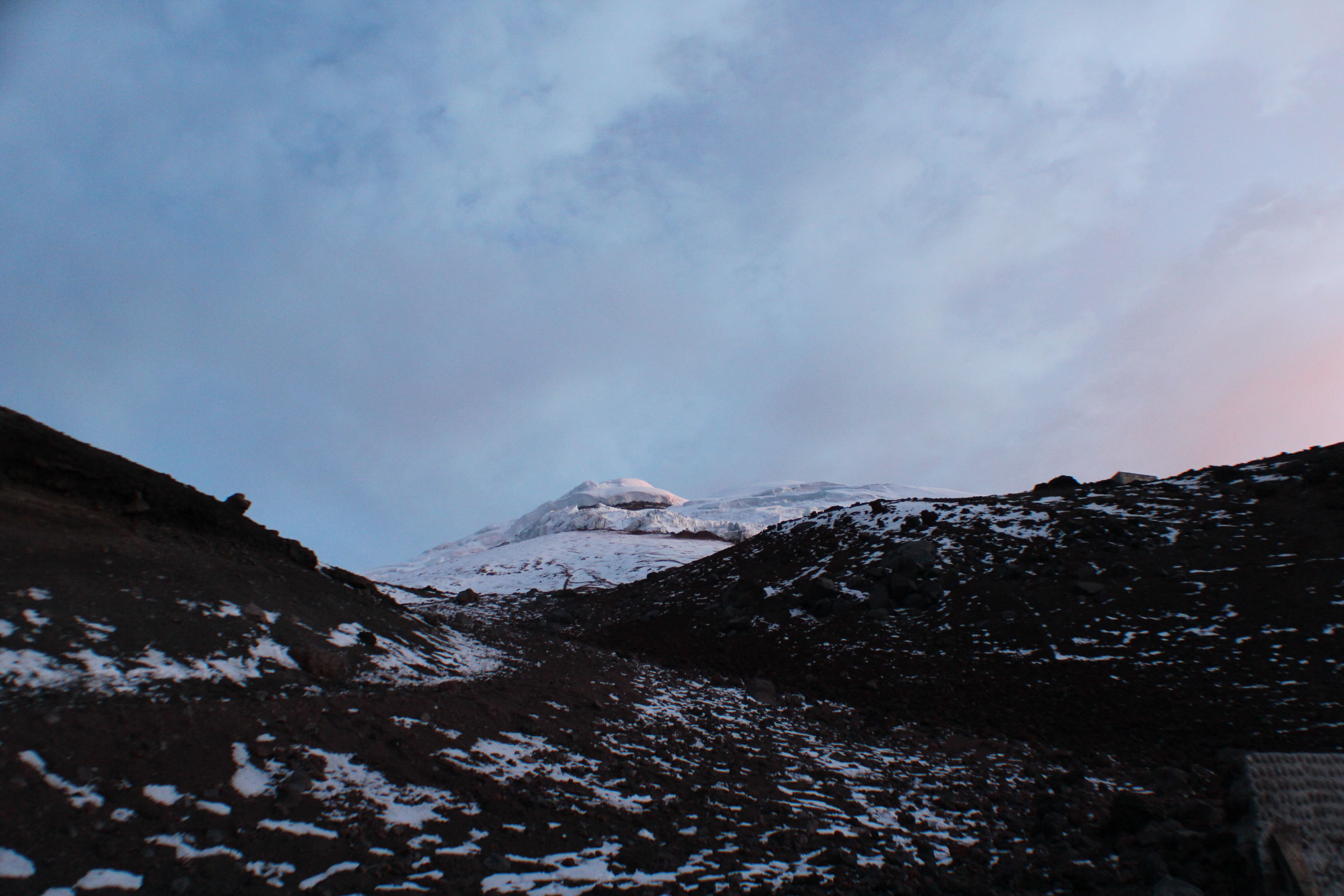
This is a view of the summit the night before around suppertime. Clear and crisp. Only a six hour ascent from here.
The first 45 minutes are spent hiking on typical volcanic rock, but soon you get to the start of the glacier and strap on your crampons and begin to use your ice axe, more as a walking stick than anything. This was also probably the most difficult part of the trek for me as it took a little bit to get used to walking at right and left angles (switchbacks) with the crampons. It was more snow than ice as it had snowed on the volcano two days previously and I could really feel the strain of walking on my ankles. But over the first few hours I managed to find a rhythm to work with and could climb for about 45 minutes before taking a break.
Stopping on the mountain is tricky as you’re incredibly tired and need to rest and eat a snack, but you also get very cold and can only stop in certain locations that are safe to do so. Julian was great at letting me know where was and was not safe to stop. If I had my gloves off for more than a minute, by the time I put them back on, they burned and tingled. I brought some mini heat packs for my hands and cracked them open as soon as I could. I had some for my feet as well, but I asked Julian if we could stop so I could put them on my toes and he said no to taking my crampons and boots off. My toes on my left foot had been numb for well over an hour and I was very concerned about the effects of frostbite. Thankfully after another hour they managed to warm up enough to get the feeling back into them.
As we continued our long, steady march up the volcano, groups of hikers began to turn around and go back down. What a sad feeling to see people turning away without getting to reach the summit. But it was also a reminder of how tough and challenging the trek would be and that fired me up to keep going, step by step.
By the time I hit the three hour (roughly halfway point) in the hike, I knew I would make the summit. I felt good, I had a rhythm, and three more hours didn’t seem so bad. At about 4:30 a.m. I hit a wall and asked Julian to stop for a moment. He said no and that we had to climb for a few minutes more but I could barely keep going. The only thing that got me to the next stopping point was Julian’s constant tugging on our safety line to keep my feet moving. I almost collapsed when we stopped and desperately needed to eat some chocolate to pick my energy levels up as they had dropped dangerously low. I spent a good ten minutes sitting there trying to force frozen chocolate into my system (you’d think it would be easy but I just couldn’t bring myself to eat any. It didn’t melt in your mouth very well because of the cold). Finally we got back up and continued on.
Shortly after that, I experienced one of the most terrifying moments of my life when in the pre-dawn glow I first heard, then felt, and finally saw an avalanche of snow and ice no further than 100 meters to my left. I’d like to say it was incredible and awesome, but really, it was more terrifying than anything. The volcano does not care that you’re on it and there would have been no escape from this avalanche if we had been any closer, or if it set off snow and ice near us. In 1996 there was an avalanche that killed 13 climbers and buried more in the Refugio. A scary reminder of how ruthless nature can be. My guide thought it was amazing and whooped up to another guide about it. They’re crazy!
After that we spent the next hour and a half on the steepest section of the climb right before the summit. The only thing to keep me going and motivated was the lightening of everything around me with the beginning of sunrise and the ability to see the summit above us. It was no longer pin-prick lights of the other trekkers; the summit was becoming a real, tangible location to reach. Slowly and steadily we all grouped up and pushed on. Up, up, and more up, with more snow to climb over.
Finally, at about 6:30 in the morning I reached the summit of Cotopaxi and was rewarded with one of the most amazing views I have seen in my entire life. You could gaze for hundreds of kilometers in every direction. There were no clouds to block the view and the Altiplano below was absolutely stunning. I took many photos but they just can’t describe the actual view with the emotions, the exhaustion, and the effort it took to reach the top. It literally brought me to tears. Everyone was celebrating and congratulating each other, which just added to the incredible accomplishment we had all achieved.
 To add to the sublime moment at the summit, I also witnessed my first ever volcanic eruption. Although Cotopaxi itself is still active, nothing major has happened on it in years. But in the distance, almost two hours by bus, is another active volcano called Tungurahua. My guide had mentioned mere minutes earlier how it would be amazing if the volcano went off, as it is commonly known to do so, and lo-and-behold, it does. One glance into the distance revealed a thick cloud of smoke, ash, and dust spewing out of the volcano. Could this day get any better?
To add to the sublime moment at the summit, I also witnessed my first ever volcanic eruption. Although Cotopaxi itself is still active, nothing major has happened on it in years. But in the distance, almost two hours by bus, is another active volcano called Tungurahua. My guide had mentioned mere minutes earlier how it would be amazing if the volcano went off, as it is commonly known to do so, and lo-and-behold, it does. One glance into the distance revealed a thick cloud of smoke, ash, and dust spewing out of the volcano. Could this day get any better?
After spending almost 45 minutes on the summit, we began our descent down to the Refugio which would take about two hours. The hike down was much more enjoyable as you could see everything around you and really enjoy the glacier atop the volcano. Julian and I spent long moments sitting in the snow enjoying the view and the sunshine. At one point Julian knew how exhausted I was and let me sit in the snow and slide down on my bottom on the side of the volcano while he ran along with me and steered using our connected safety line. It was pretty fun, took me back a moment to my childhood and to volcano boarding in Nicaragua, and covered some decent ground in a short time. We even passed two groups who were slowly trudging through the snow.
Near the bottom of the glacier my exhaustion was creeping up on me and I was feeling the effects of the long night. My toes began to bruise from the constant downward force my body was putting on them and things were starting to warm up. By the time I reached the volcanic rock portion of the trek down to the Refugio, I had hit another low and was greatly anticipating a nap in the near future.
But, after some perseverance and 2 and a half hours to get down, I was able to rest up for a few minutes at the Refugio, pack my gear, and head down the last couple hundred meters to the car park.
The night was by far the most challenging thing I have done in my entire life. It was a first for summiting a mountain above 5000 meters, my first avalanche, my first volcanic eruption, and my first summit on a glacier. I learned a lot about myself and how much mental thoughts, determination, and straight up grit can push you past what you thought your limits were. It’s a bit of a cliché, but believing in yourself and being as positive as you can really make the difference in achieving goals or failing. And for me now, the next question is what’s my next major mountain to summit, as South America has so many to conquer!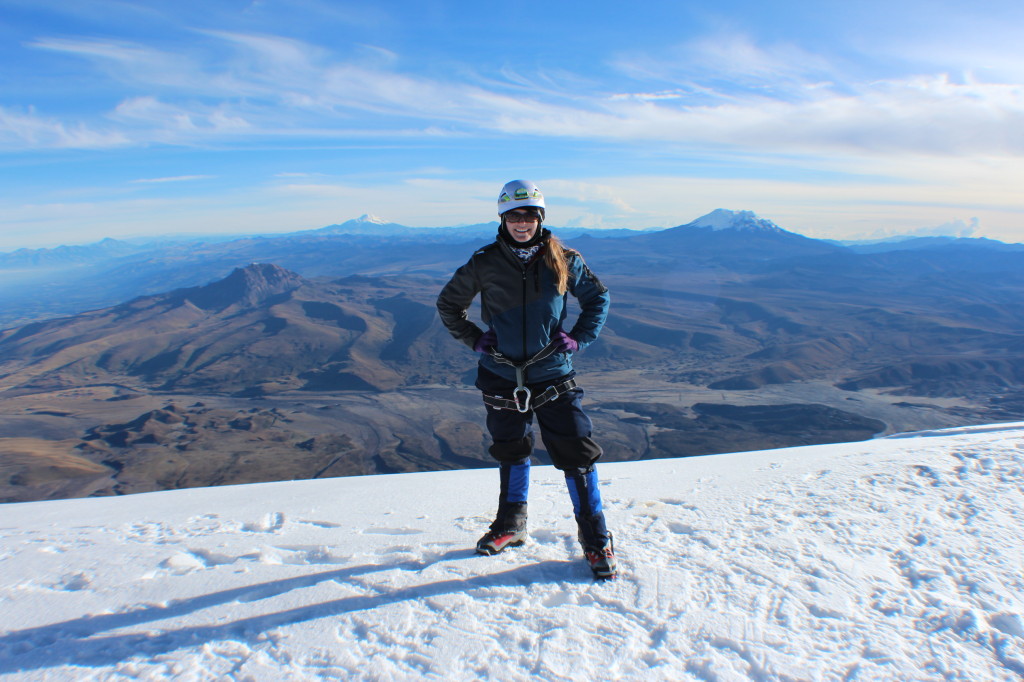

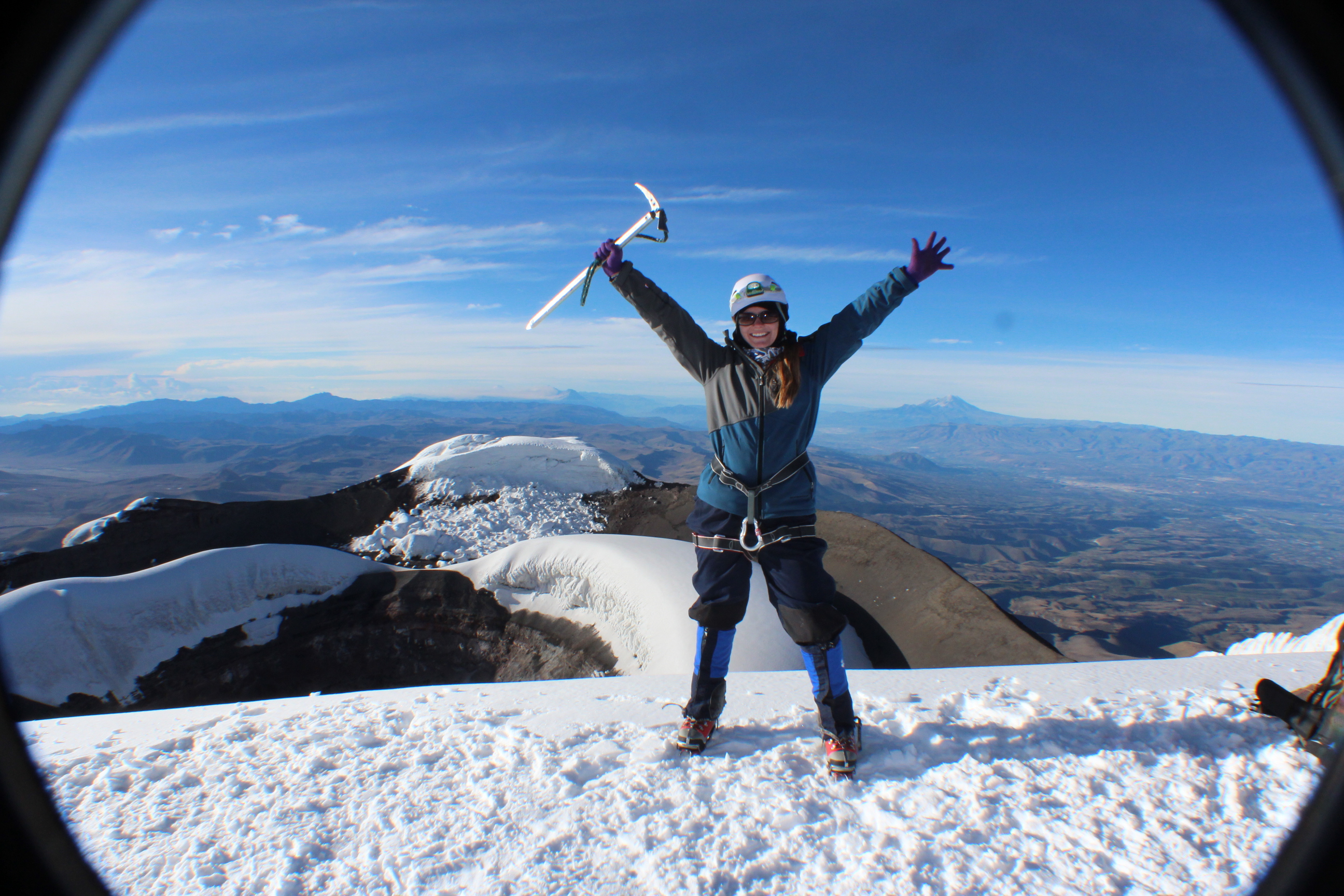

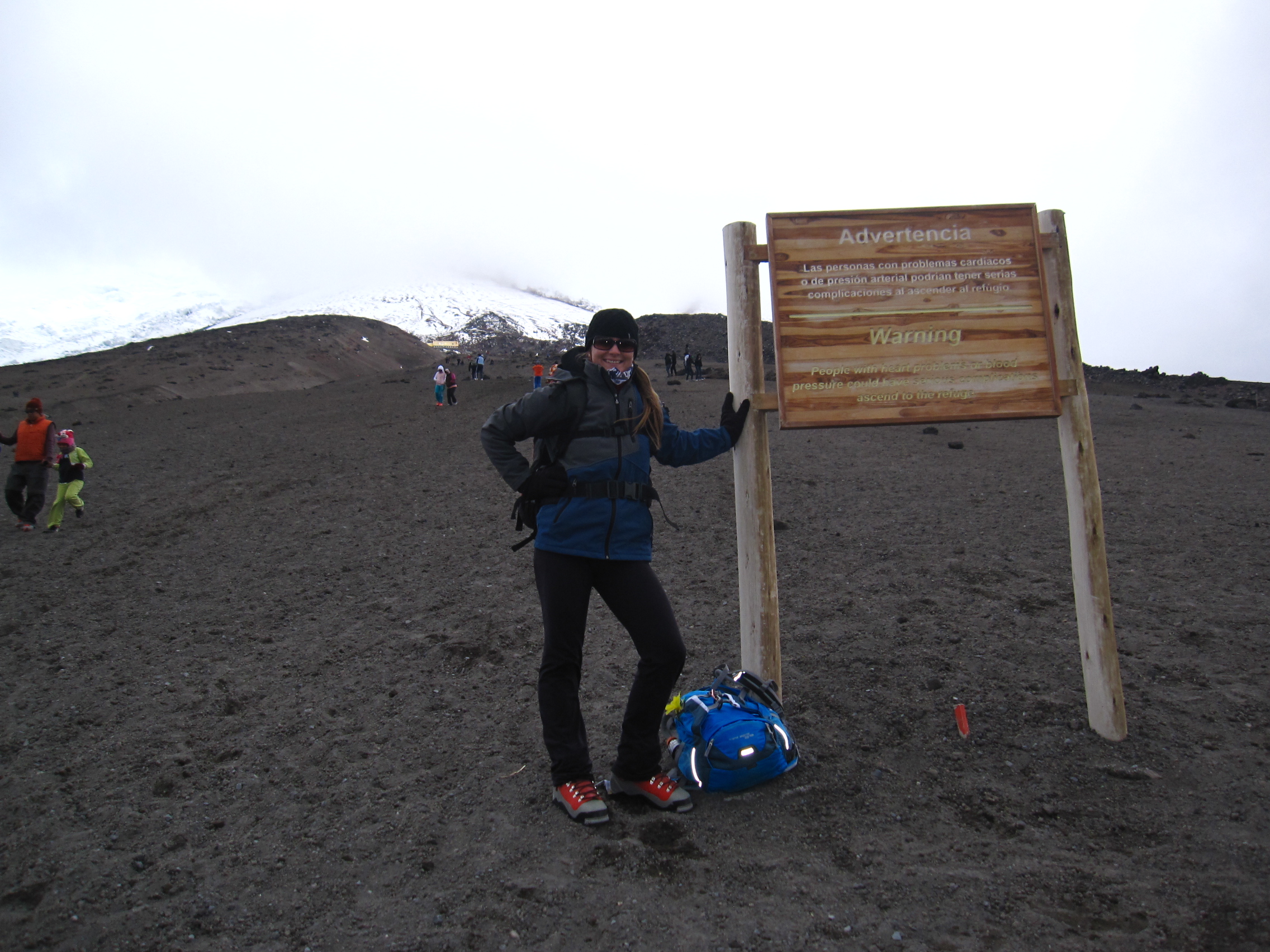
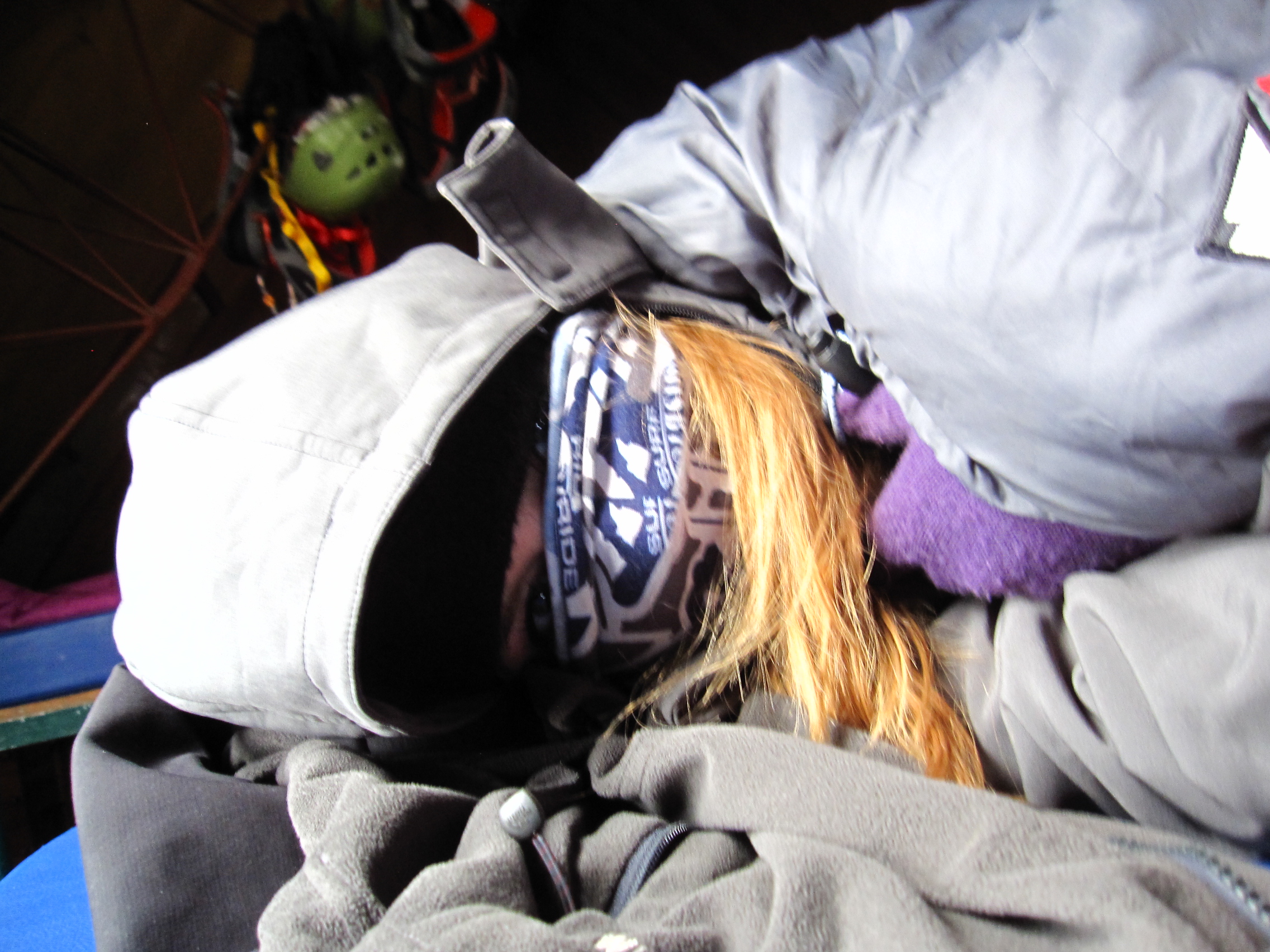
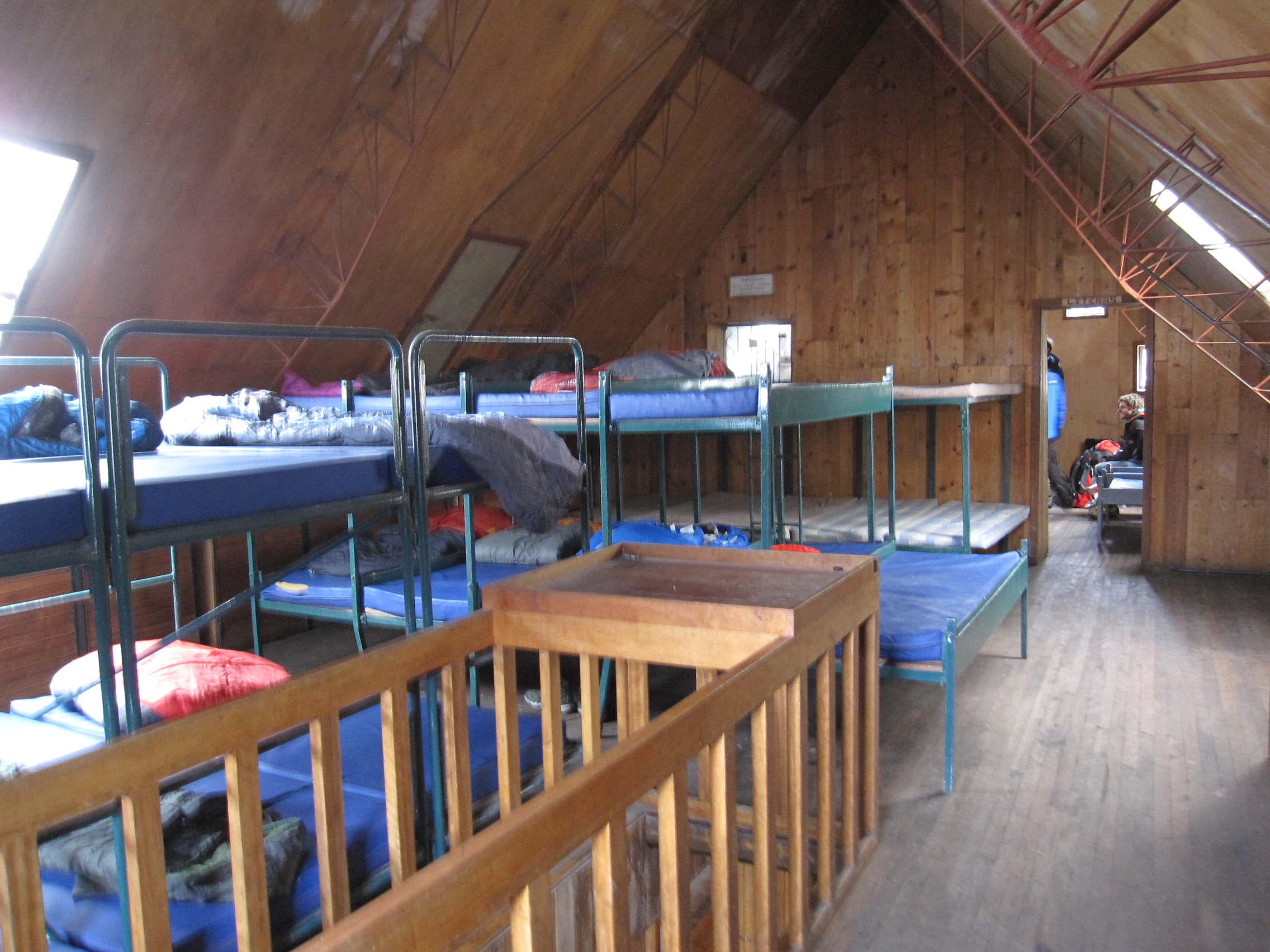

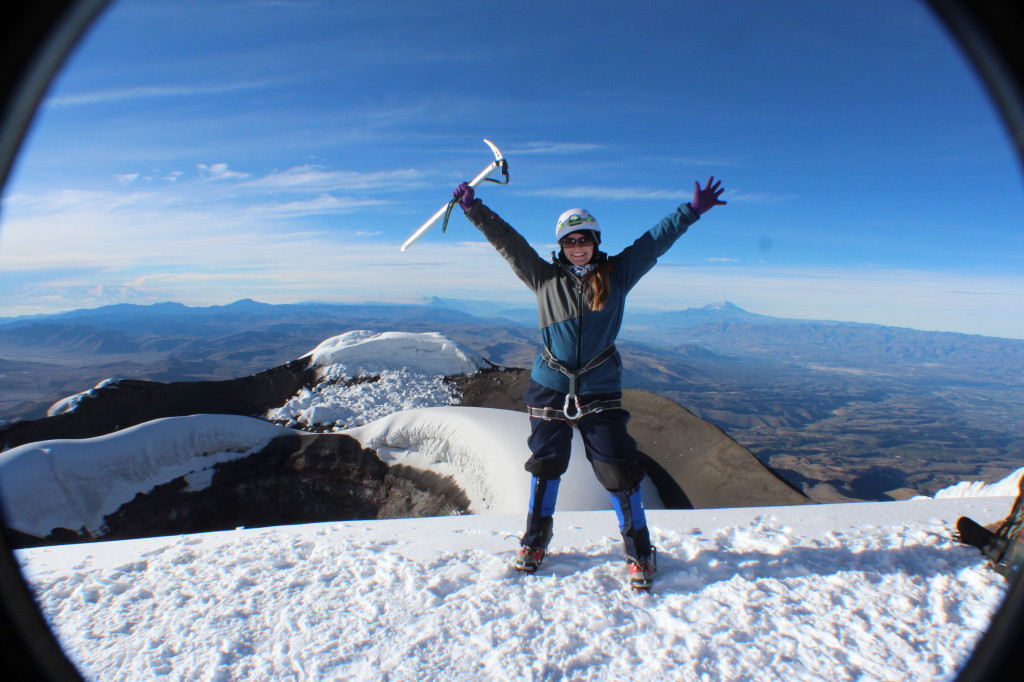
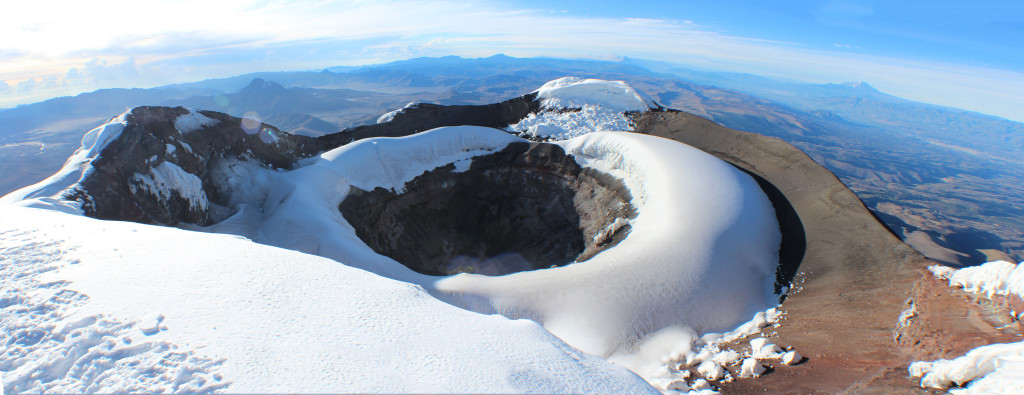
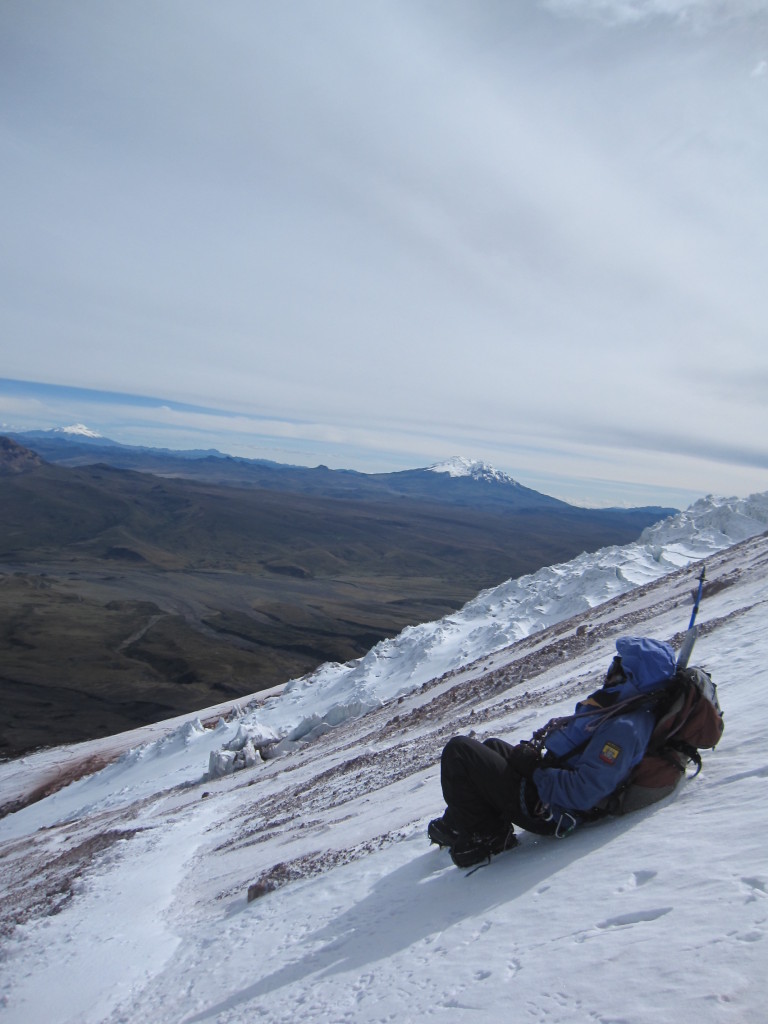

great report. How did you find the guide?
The guide was great – really professional and was able to encourage me when I had harder moments and didn’t think I could continue one. Would highly recommend!